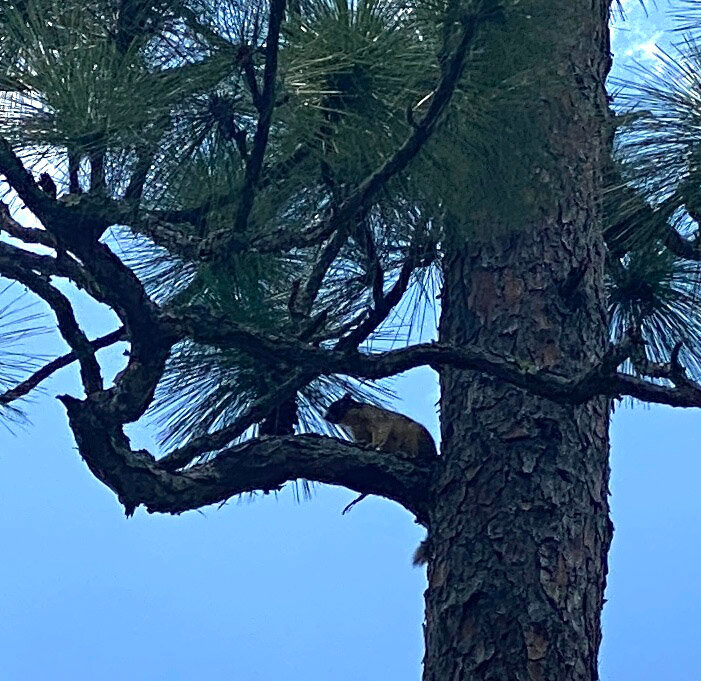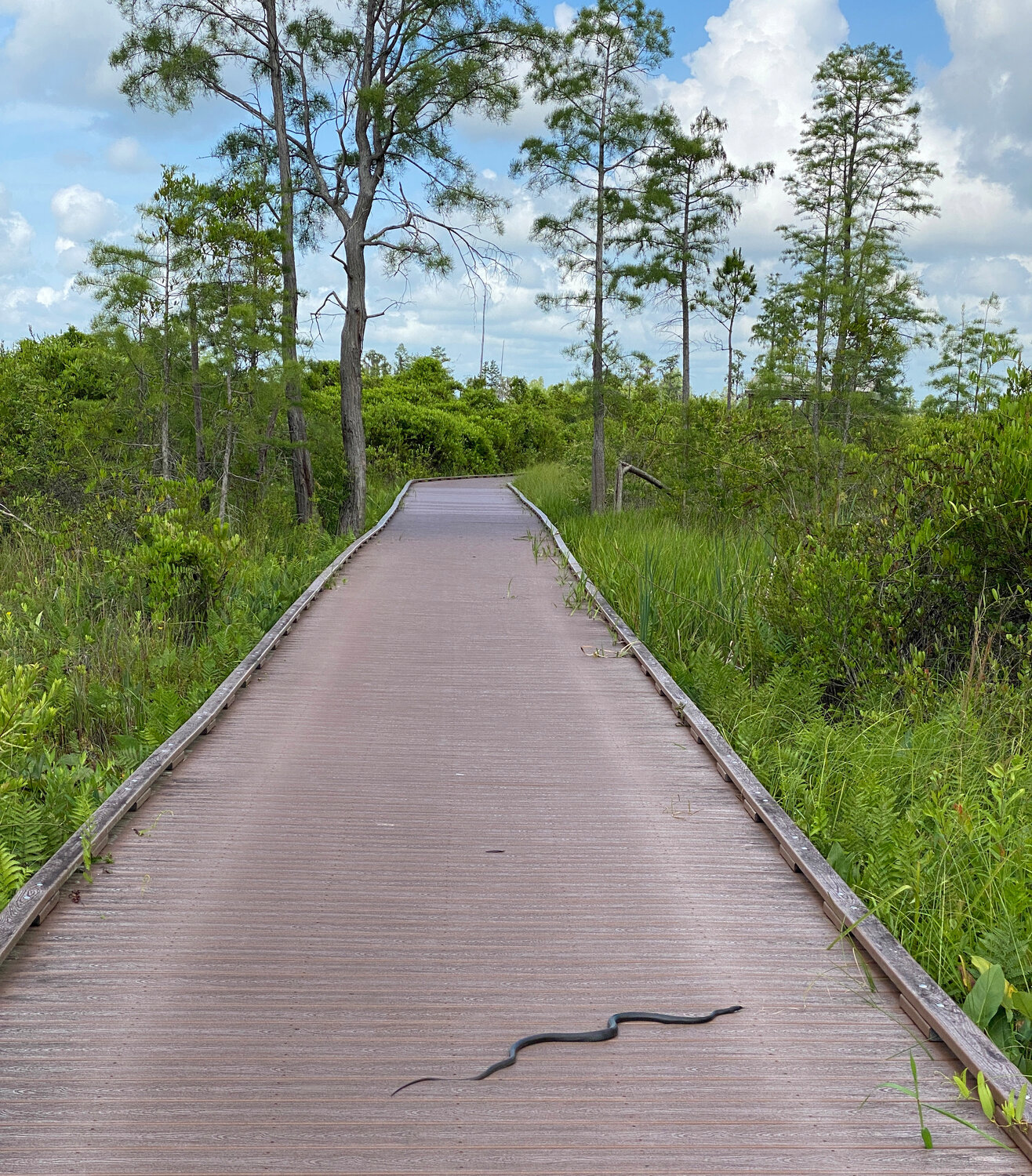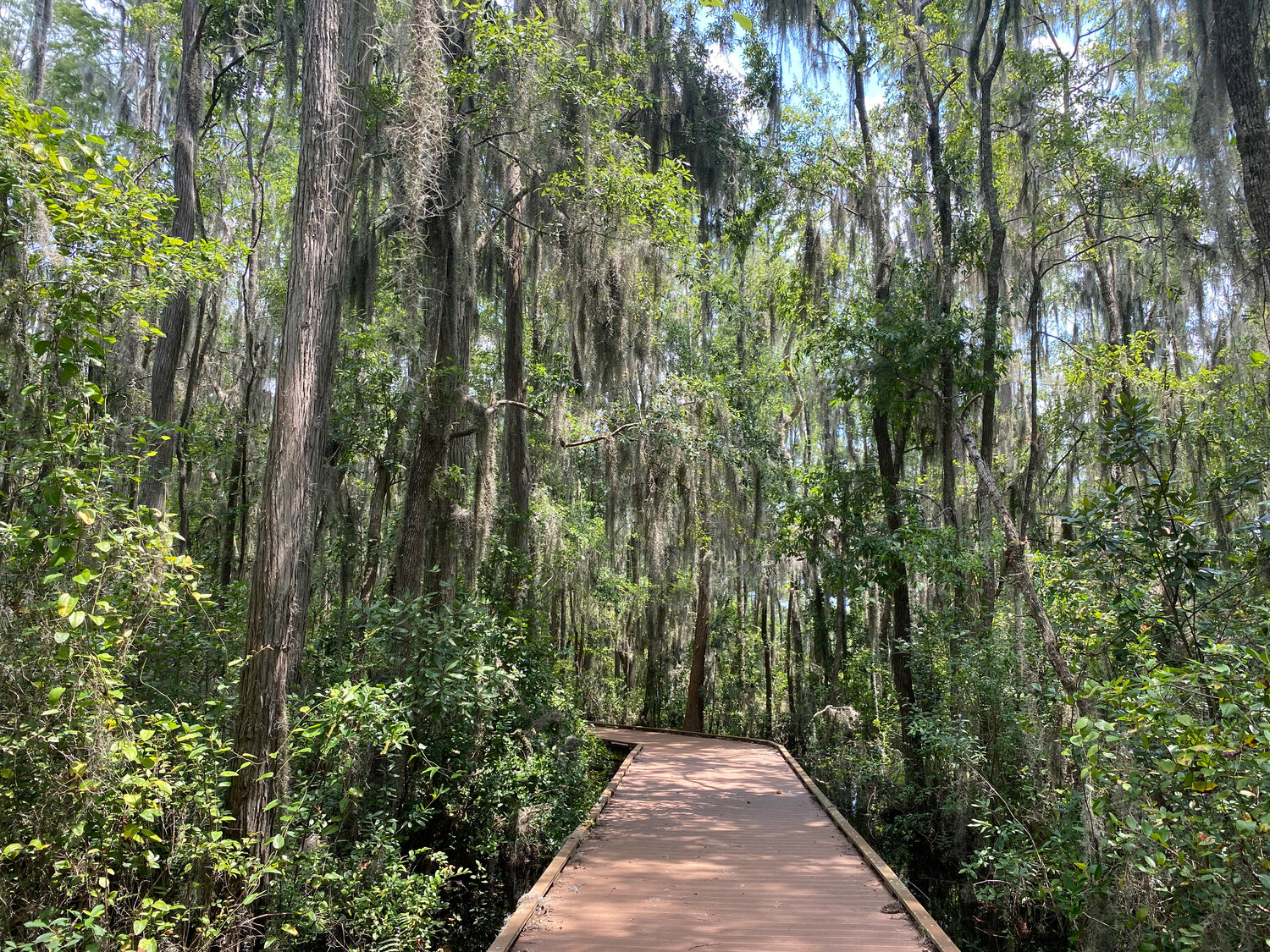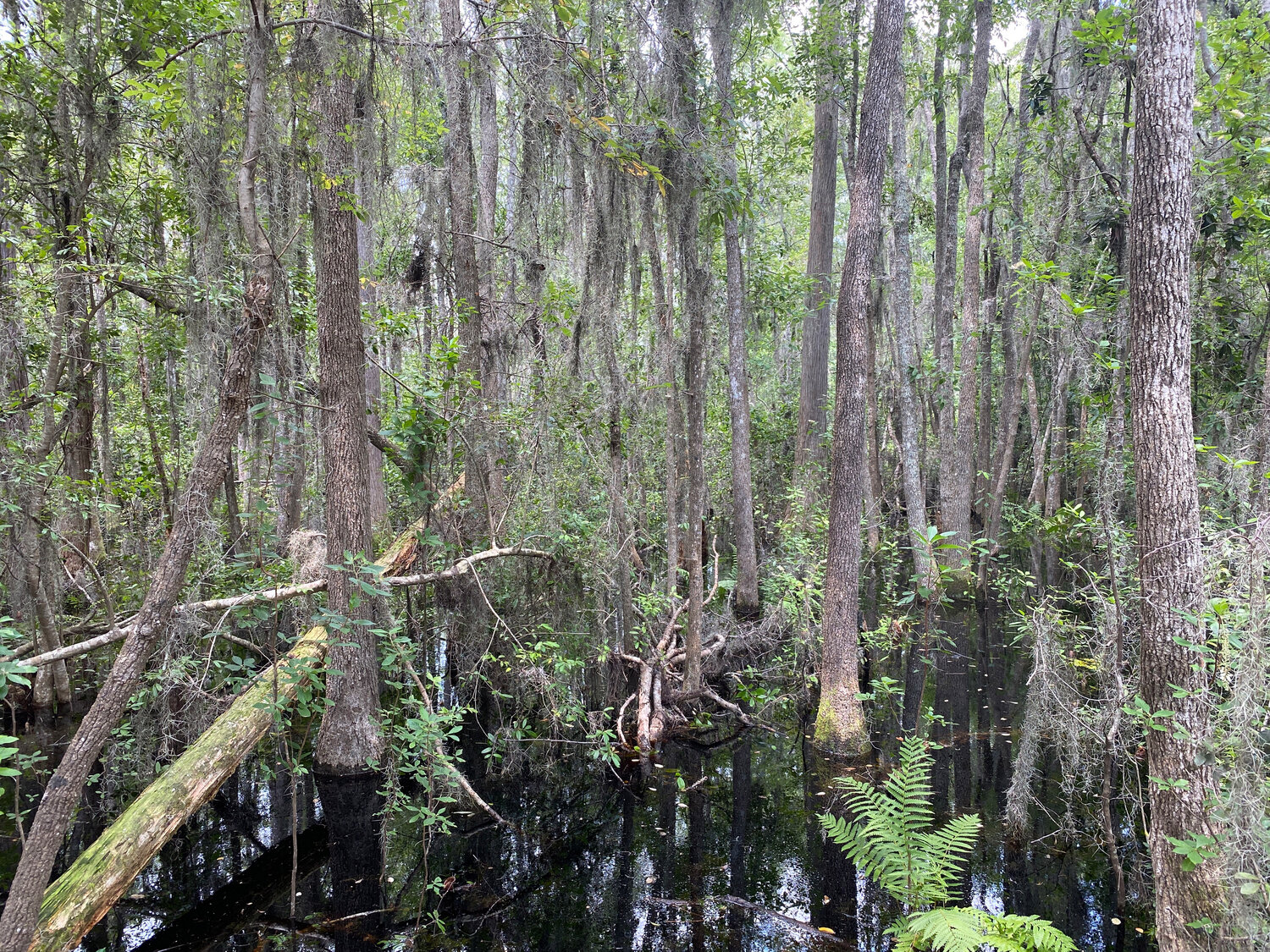Hot Day Drive
On days when it is too hot for us old folks to do much outside, we still reject being trapped in our air-conditioned home. Instead, we would rather be enclosed in our air-conditioned car, seeing the sights outside our windows as we drive around listening to NPR news or various podcasts. And, when we are tired of our usual travels down Heckscher Drive to the Joe Carlucci Boat Ramp, we look north, to the east entrance to the Okefenokee National Wildlife Refuge.
Even the drive up U.S. Highway 17, west on County Road 108, north on U.S. Route 301 across the border to Folkston, and then south again on the Okefenokee Parkway is often interesting. This route gives us a look at our more rural Nassau County neighbors, a whole different world than ours out on Amelia Island. Often there are wildflowers blooming along the roadside, livestock in yards, and the occasional road-killed wild animal. We have sadly seen dead otters, beavers, and wild hogs sometimes — not often, luckily — and if it is something unusual, we might stop and take a closer look.
With our National Park pass, once we arrive at the Okefenokee National Wildlife Refuge, entrance is free and we can happily bypass the unmanned booth at the gate, where there is an automatic pay station. We just drive on through and head to the five-mile loop road inside the refuge. And then, we drive as slowly as we can, with no cars in front or behind us, just looking. Going slowly and looking is the key for us, enclosed in our air-conditioned car, away from any biting bugs, but still out in nature.

I keep hoping we will see a bear, or a wild hog, or a beaver, but in all our years this has never happened to us, even though these mammals live there. But if we are lucky, sometimes we see otters in the borrow ditch next to the road, and most always there are gators. It’s the smaller things we mostly notice. On the road to the park entrance, there are sometimes multi-colored fox squirrels hiding from us behind pine tree trunks. Often enough, we see a snake crossing the road. As biologists, we love to see snakes, and I usually get out of the cool car to photograph them. In days of old Bucko used to catch them for me for a closer look. In fact, in his college years, he used to collect venomous snakes for Bill Haast at the Miami Serpentarium, but no longer. We have grown older and wiser and, yes, slower on the draw these days, sadly.

Although these exciting sights are infrequent, there is always something to notice. On one trip around the loop, I focused on the various butterflies attracted to the wildflowers. Another time we pondered the regrowth of vegetation after a controlled burn. Often the woodpeckers in the woods catch our attention — the endangered red-cockaded woodpeckers, the red-headed woodpeckers, and the rest of their kin. Sometimes it is just the scenery of tall pines and wet prairies and cypress swamps to admire. There is always something.
When it is not too hot and buggy, we stop at the parking area at the end of the loop road to take the half-mile walk down the boardwalk to the observation overlook. This walk begins with a close look at the cypress swamps bordering the path, then goes through a hot, sunny, wet prairie area where a raging fire a number of years ago removed the shading trees. The observation tower at the end gives an expansive look at a lake where often sandhill cranes and various egrets and herons are clustered. And if it is not too hot, the comfortable chairs behind the visitor center also provide a quiet spot to watch gators and other wildlife.

At the end of this trip, there are choices for us. Which restaurant do we want to have lunch at before we head home again? Is it the Okefenokee Restaurant in Folkston, where the all-you-can-eat buffet features country food favorites? Or maybe, coming home by a different route through Kingsland, instead we choose Steffens for similar fare, but served to us on their old-style diner counter where we elbow up with locals. Or, if I feel ambitious, we will pick up a bunch of freshly steamed blue crabs at M & A’s Seafood Market to bring home to messily gorge ourselves on the delectable fresh crab meat that it takes work to extract.
All in all, every day we take the time to drive up to the Okefenokee is rewarding for us. It sure beats sitting in our house!
Pat Foster-Turley, Ph.D., is a zoologist on Amelia Island. She welcomes your nature questions and observations. [email protected]






